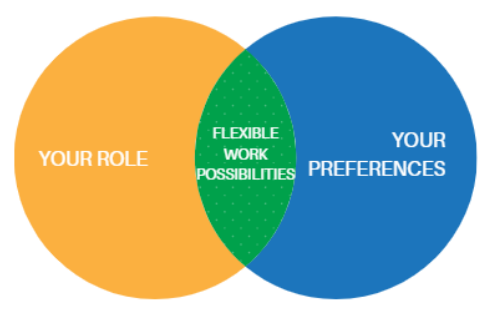Flex through the Great Resignation
The Great Resignation is on its way to our shores here in Aotearoa, as Renee Jaine explains in this brilliant article.
With high levels of employment, no means of bringing new people from overseas and wage inflation pressures, people can easily find a new role, and vote with their feet to get a pay rise and better conditions. Employers, on the other hand, have very few options when they need to recruit in an increasingly tight labour market.
With the Great Resignation just around the corner, managers are looking for creative ways to attract and retain the right people in their teams. Flexible work is something more people expect to have access to, is highly valued and it’s something that we can offer.
That is not news to most of us anymore. I see so many leaders becoming bolder, braver and more willing than ever to try out new ways of working.
There are also those who feel flex-hesitant and don’t want to be the first to test the flex-boundaries. What if it doesn’t work? What if the culture isn’t ready for something like a 9-day fortnight or permanently remote team members working from other parts of the country, let alone trying a shorter work week or job-sharing?
Whether you’re a pro-flex leader or a flex-hesitant leader, if your view is the thing that’s driving flexible work decisions in your team, you could be creating more problems than you’re solving.
Here are a couple of examples I’ve seen recently.
The flex-hesitant leader
This week I talked to a manager who had found it hard to recruit the right person in his team. He finally got a candidate he was really excited about and was ready to make an offer. This person needed to be able to work from home for a couple of days a week, which he was sure was workable. To get the offer approved he needed his manager to give it the thumbs up too. This is when it all fell over. The senior leader was flex-hesitant and didn’t want to open that can of worms on behalf of the rest of the organisation. They lost the candidate.
The pro-flex leader
A little while back a manager told me that he managed to find a fantastic person for a hard-to-fill role in his team. The candidate needed to work differently on her week when she had sole-care of her children and would make up that time in the week when she didn’t. He couldn’t say yes fast enough and she started work feeling really supported. In her first week she met a key customer who had no idea about this week-on, week-off arrangement and couldn’t see how that would work in practice. This left the new person feeling deflated, unsupported and exposed. She started looking for a new role straight away.
These stories highlight the danger of relying on our personal views of flexible work when making decisions, whether you’re flex-hesitant or pro-flex. Instead, what we need is a reliable, transparent and clear process, with shared tools and language, that drives more predictable and trusted flexible work decisions.
Now that flex and remote work have become the norm, no longer the exception, we need to backfill our process and tools to catch up. Flex has become too important to be left to chance depending on our mindsets and the mindsets of those around us. People can’t and won’t trust that flex is here to stay if there is no consistency or predictability in how those decisions are made. And if they can’t trust that flex is something they can rely on then they’ll find somewhere else where it is.
And you know, if you haven’t got a reliable, trusted process and tools then all you’ve been able to do until now is rely on your perspective. In the absence of a clear, transparent process, what else can you do?
The best place to start is to think about what’s the sweet spot between the person’s preferences and what’s possible in the full breadth of their role?
Use this as a conversation starter with your people as a way to explore what types of flex are possible for each person. This starts to create some predictability and consistency in how flexible work decisions are made. That way you can get ahead of the pack and sure-up your team as a place people flock to, rather than flee from, when the Great Resignation arrives.

